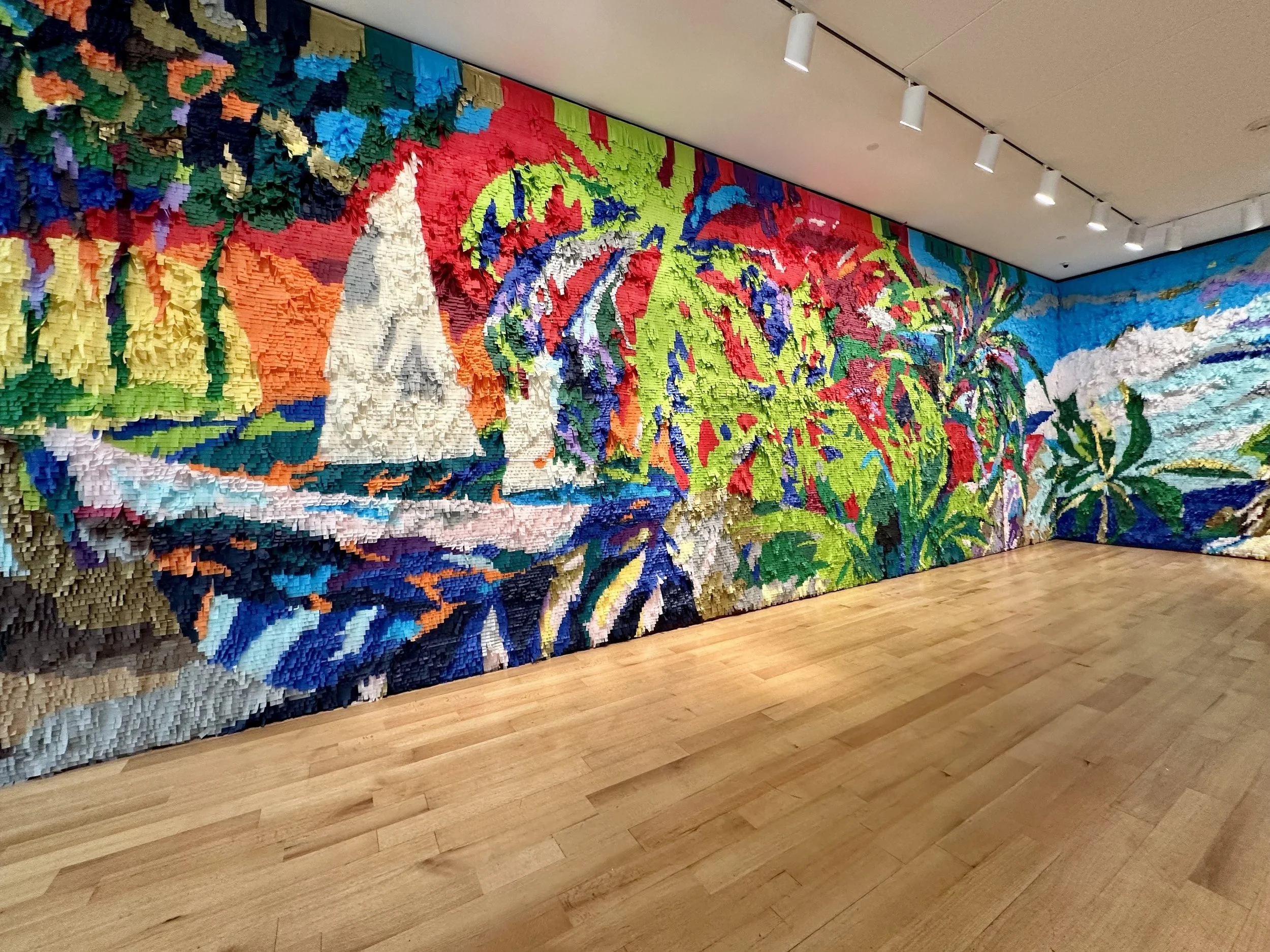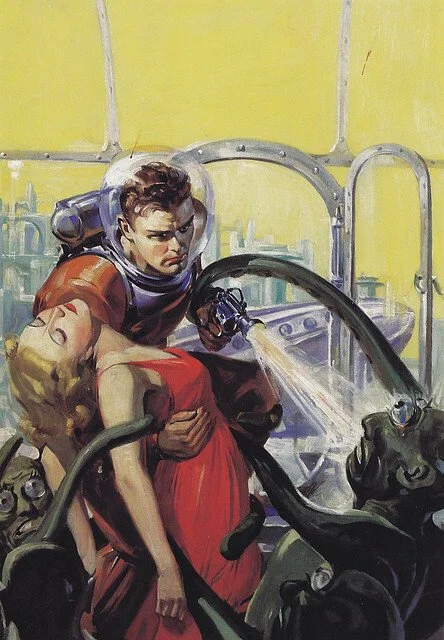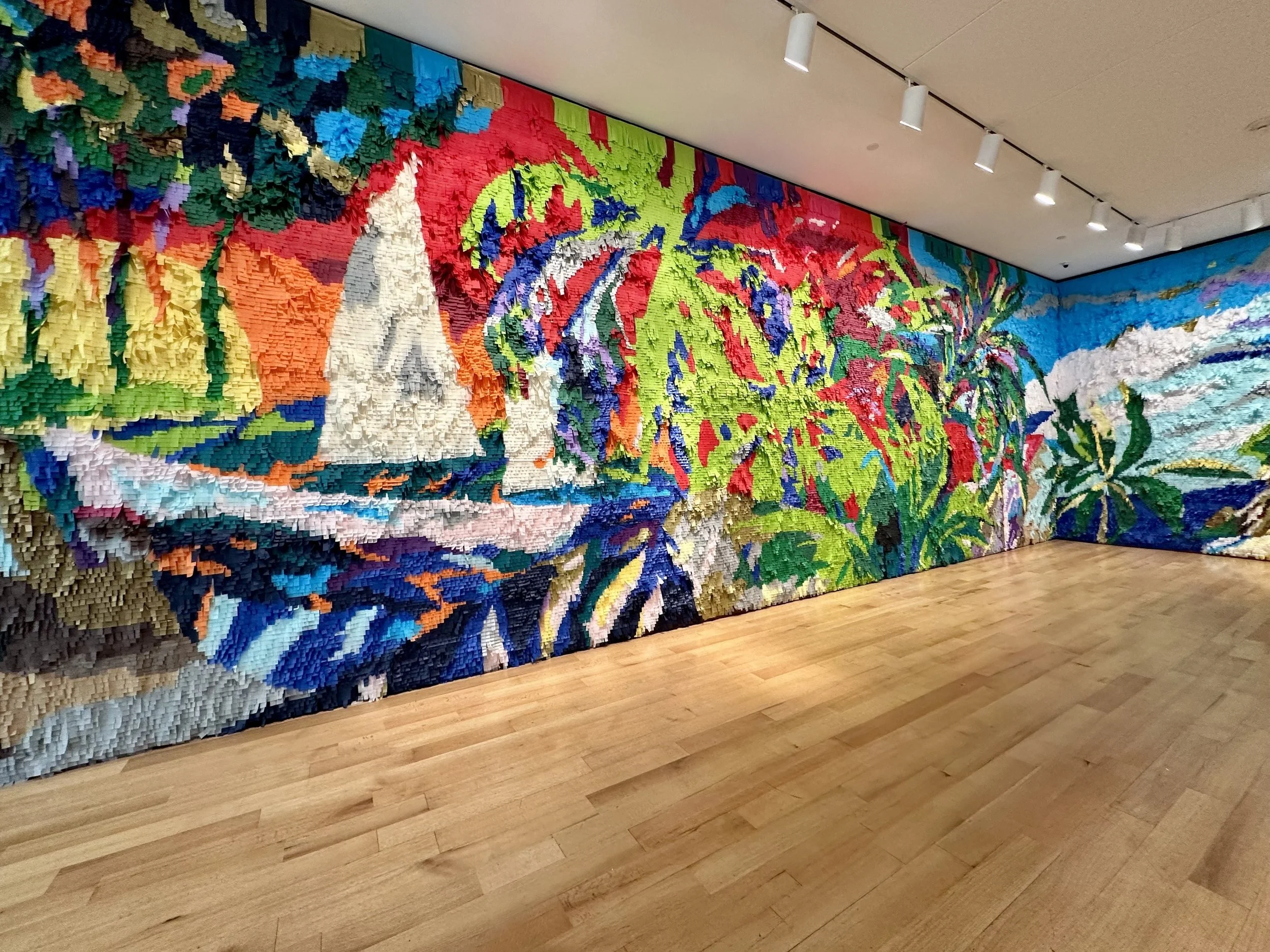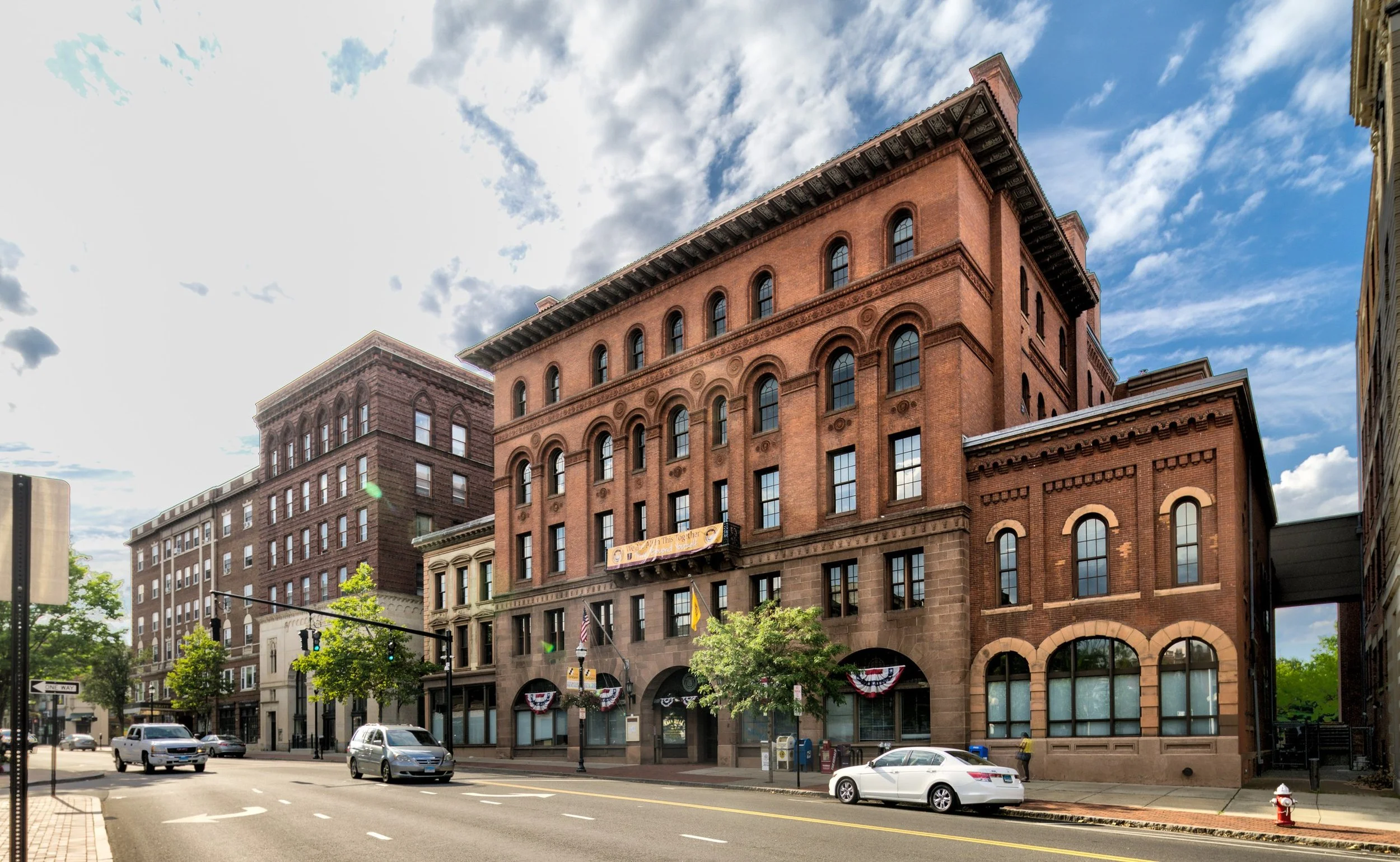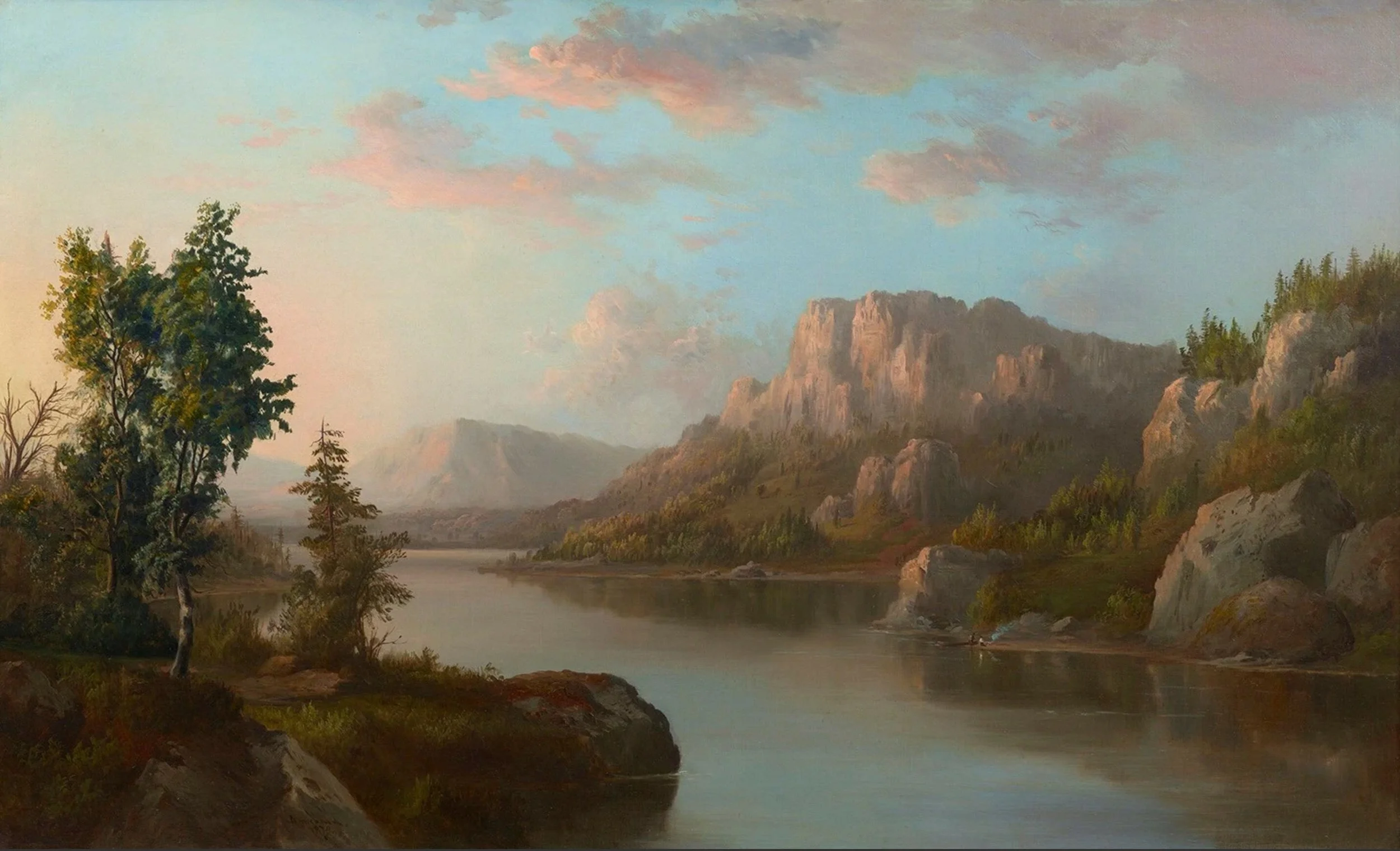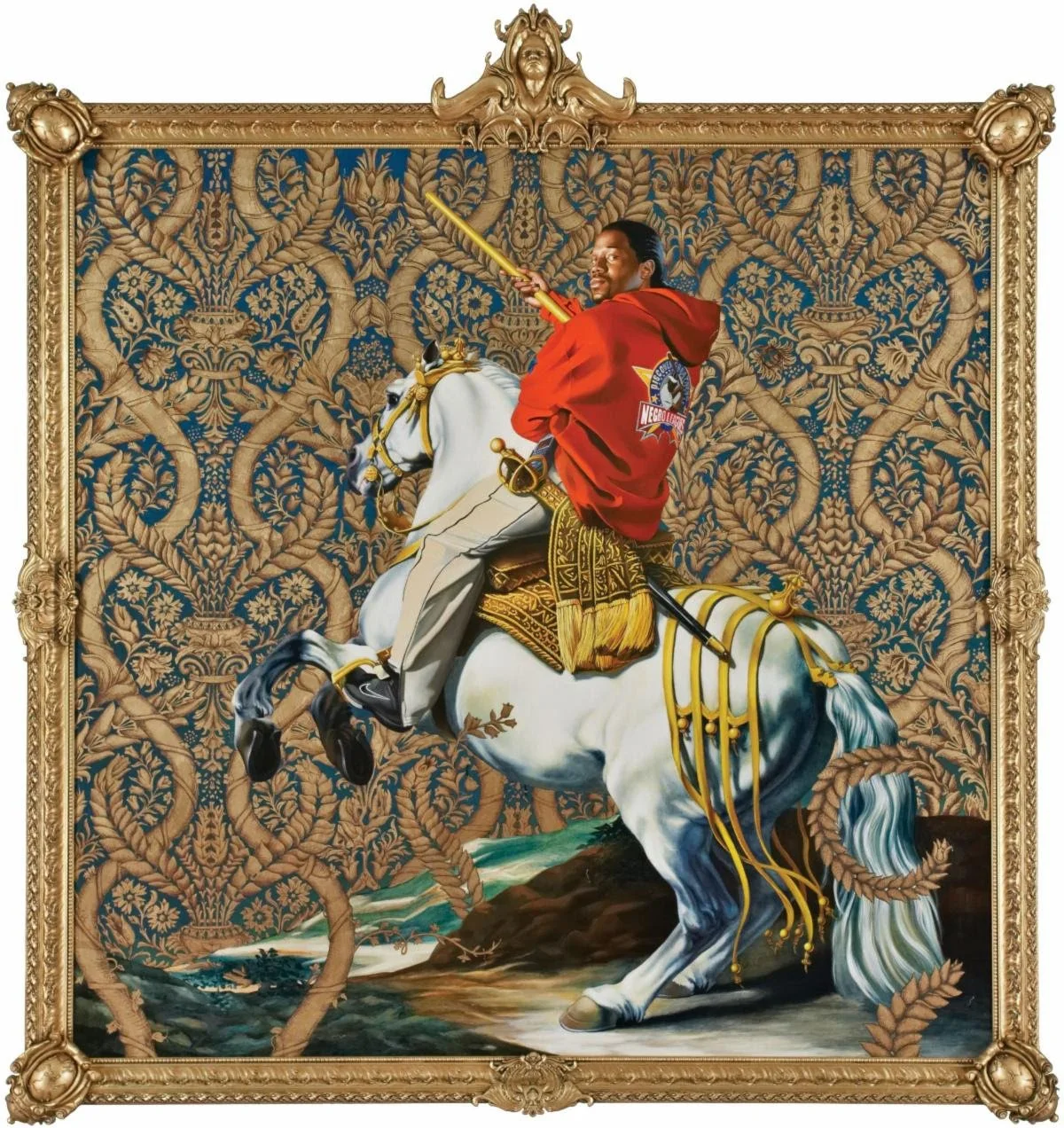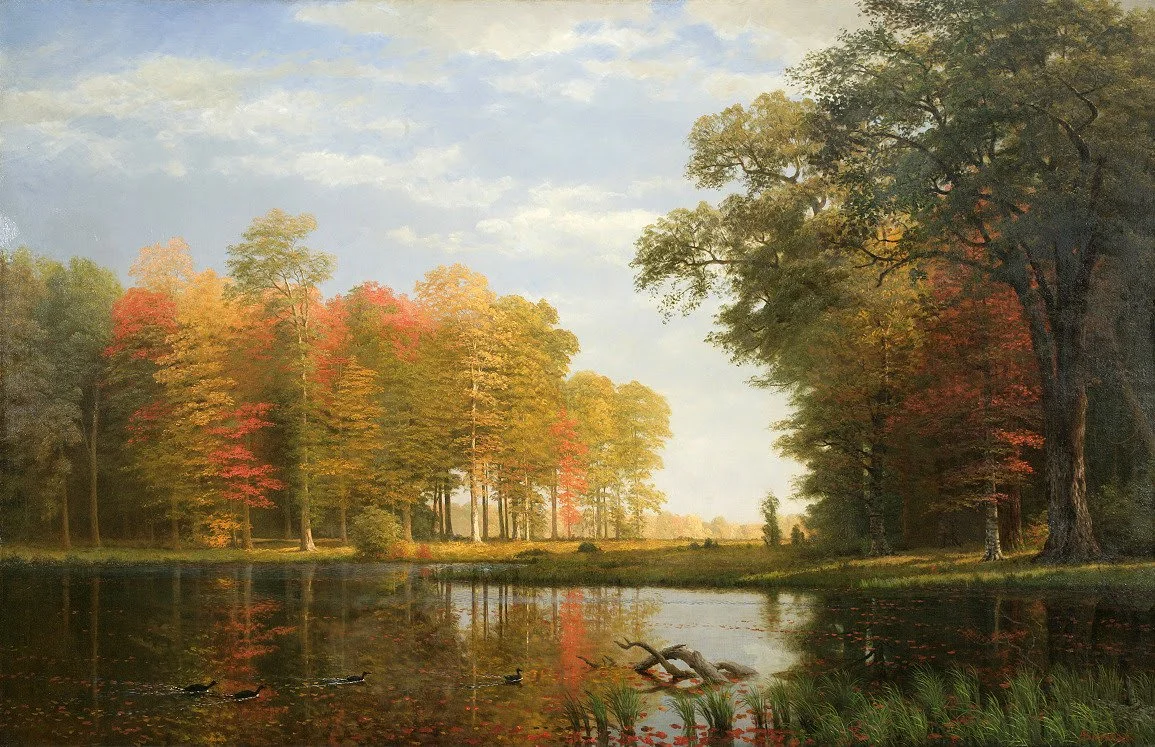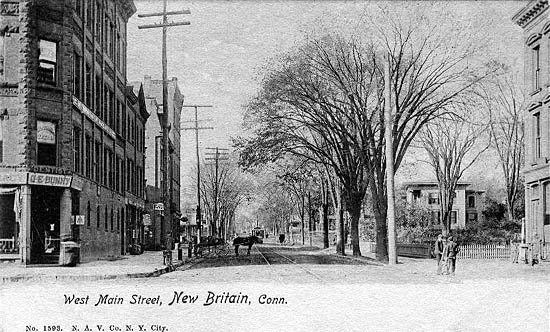
Speaking to fantasies about under-represented cultures
“CONERICOT” (paper, cardboard and glue, by Justin Favela, in his show “Do You See What I See?’’ at the New Britain (Conn.) Museum of American Art, through June 22.
The curator explains:
“Brilliant colors, tissue paper, cardboard, and untold stories converge in “Do You See What I See?’’ Nestled throughout the galleries, this exhibition is an exploration of the artist's quest to see himself and the vibrant Latinx community represented within the museum's esteemed collection.
“CONERICOT,’’ Favela’s piñata-inspired mural, draws inspiration from depictions of Latin America from the permanent collection. His immersive installation alludes to the beauty of those landscapes, as well as the fantasies that often color Americans' perceptions of these under-represented cultures.’’
Pulp paradise in New Britain
“Interplanetary Graveyard” (oil on canvas), by Howard Brown, from the March 1942 Future Fiction, in the show “WONDER STORIES: Pulp Art Illustration From the New Britain (Conn.) Museum of American Art,’’ at that museum through Nov. 3.
The museum explains:
“The museum’s celebrated collection of Pulp Art illustration will be on view at the NBMAA and the Delamar Hotel in West Hartford, in a two-part exhibition highlighting the compelling narrative imagery depicted by artists of this genre.
“From the Great Depression through the World War II era, Americans turned to inexpensive novels referred to as ‘pulp-fiction’ as a form of entertainment and a way to escape their woes. These gripping stories, conceived before the age of television, were suffused with adventure and mystery. Often produced as series, pulp-fiction gave rise to iconic characters, such as The Shadow, The Phantom Detective, and Doc Savage, who many consider the forefathers of today’s comic book superheroes.’’
Beautiful fantasies and landscapes
Mural by Justin Favela in his show “Do You See What I See?’’, at the New Britain (Conn.) Museum of America Art through Dec. 1
From the museum’s description:
“Brilliant colors, tissue paper, cardboard, and untold stories converge in ‘Do You See What I See?’, featuring works by Las Vegas-based artist Justin Favela (born 1986). Nestled throughout the galleries, this exhibition is an exploration of the artist's quest to see himself and the vibrant Latinx community represented within the museum's esteemed collection.
“‘CONERICOT,’ Favela’s piñata-inspired mural, above, draws inspiration from depictions of Latin America from the permanent collection. His immersive installation alludes to the beauty of those landscapes, as well as the fantasies that often color Americans' perceptions of these underrepresented cultures.
“‘Do You See What I See?’ extends its presence throughout the museum with several reinterpretations of 19th- and 20th-century paintings and works on paper. These dispersed works serve as thoughtful interventions within the existing collection, bringing past and present into conversation and addressing Latinx presence—or absence—in the story of American art.”
Downtown New Britain in 1930, as the once manufacturing powerhouse slipped into the Great Depression. Few of the industrial buildings above are still there.
Downtown New Britain a few years ago.
— Photo by Kenneth C. Zirkel
But bring a map anyway
"...the wailing...ushers us home...and there is a bellying on the land...’’ (mixed media on jacquard woven photo tapestry and custom vinyl wallpaper), by Ebony G. Patterson, in the show “Women Reframe American Landscape,’’ at the New Britain (Conn.) Museum of American Art, through March 31.
Image courtesy the artist and Monique Meloche Gallery
The museum says the show “features the work of nineteenth-century American artist Susie M. Barstow juxtaposed against the work of 13 internationally acclaimed, contemporary female artists. Many of the 13 artists made site-specific installations for this show that, much like the exhibition's title suggests, reframes the concept of land and the ‘landscape’ in artwork.’’
“Kaaterskill Creek” in New York, circa 1870, by Susie M. Barstow
Landscape painter who broke barriers
“Landscape” (oil painting, 1870), by Robert S. Duncanson, at the New Britain (Conn.) Museum of American Art.
The museum says:
“Robert S. Duncanson is considered a member of the second generation of Hudson River School painters and is celebrated for his idyllic pastoral scenes of peaceful rivers and verdant mountains. Successful during his lifetime, he was known in the 1800s by American press as the ‘best landscape painter in the West,’ and London newspapers hailed him as an equal to his British contemporaries. Born a freedman in Seneca County, N.Y., in 1821 to mixed-race parents, Duncanson moved to the prosperous city of Cincinnati in 1840 to pursue a career in the arts, and he taught himself by painting from nature and by copying reproductions of works by Hudson River School masters. In the late 1840s, he befriended local landscape painters Worthington Whittredge (1820-1910) and William Louis Sonntag (1822-1900), with whom he took numerous sketching trips, including a European Grand Tour with Sonntag in 1853. In the ensuing years, Duncanson traveled throughout North America and Europe, exhibiting and selling work with great success, despite being excluded from many of the expositions in America that his white peers could participate in. His paintings commanded up to $500 per work—a very high sum at the time. Duncanson died at 51, and while his work fell into obscurity for many decades, he is now recognized as a premier 19th-Century landscape artist, who broke barriers and paved the way for landscape painters and Black artists for generations to follow.’’
Visuals of ‘Black humanity’
“Equestrian Portrait of the Count Duke Olivares” (oil on canvas), by Kehinde Wiley, in the show “30 Americans,’’ at the New Britain (Conn.) Museum of American Art, June 17-Oct. 30.
The museum says:
“Drawn from the acclaimed Rubell Museum, in Miami, 30 Americans tells the story of Black humanity through the gaze of some of the most significant artists of the last four decades, including Jean-Michel Basquiat, Mickalene Thomas, Kara Walker, Hank Willis Thomas and Kehinde Wiley’’.
Valley grandeur
“Autumn Woods, Oneida County, State of New York” (oil on linen), by Albert Bierstadt (1830-1902), in the show “The Poetry of Nature: Hudson River School Landscapes from the New York Historical Society,’’ at the New Britain (Conn.) Museum of American Art through May 22.
Look at the elm trees!
Not simple Shaker art
“A Type of Mother Hanna's Pocket Handkerchief” (1851, ink and watercolor on paper), by Polly Jane Reed, in the show “Anything but Simple: Shaker Gift Drawings and the Women Who Made Them,’’ at the New Britain (Conn.) Museum of American Art through Jan. 10.
The show presents rare "gift" or "spirit" drawings made by members of the Hancock Shaker Village religious community, based in Hancock, Mass., in 1843-1857. Women created all these drawings, both the 25 in the exhibit and 175 others that still exist, making them a unique piece of American history. It is thought that there were once hundreds more of these drawings, but that the Shakers destroyed them when their creators died. “Anything but Simple’’ displays among the finest of these drawings, and explores how they relate to women’s spiritual and other roles in the mid-19th Century Shaker communities, most of which were in New England.
Shakers dancing
The Round Barn at Hancock Shaker Village
O'Keeffe and beyond in New Britain
“Jimson Weed/White Flower No. 1 ‘‘ (oil on canvas, 1932) by Georgia O’Keeffe, in the show “The Beyond: Georgia O'Keeffe and Contemporary Art’’ at the New Britain (Conn.) Museum of American Art. This innovative exhibition features more than three dozen of O'Keeffe's most important works alongside 20 contemporary artists that evoke and elaborate upon the iconography of O'Keeffe's career. New Britain is an old factory town in the middle of the Nutmeg State with a surprisingly important museum that was started in the city’s salad days.
Dennis Hopper's 1960s photos
From the show “Dennis Hopper: The Lost Album,’’ at the New Britain (Conn.) Museum of American Art. The show features more than 400 photographs taken by the actor and director depicting some of the most defining social, political and cultural events of the 1960s
